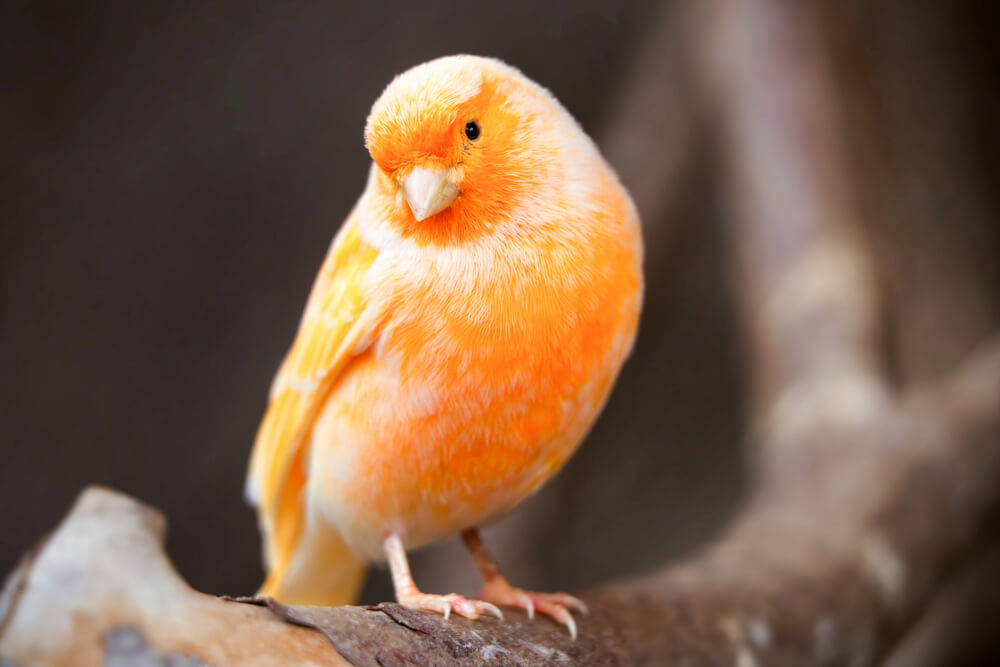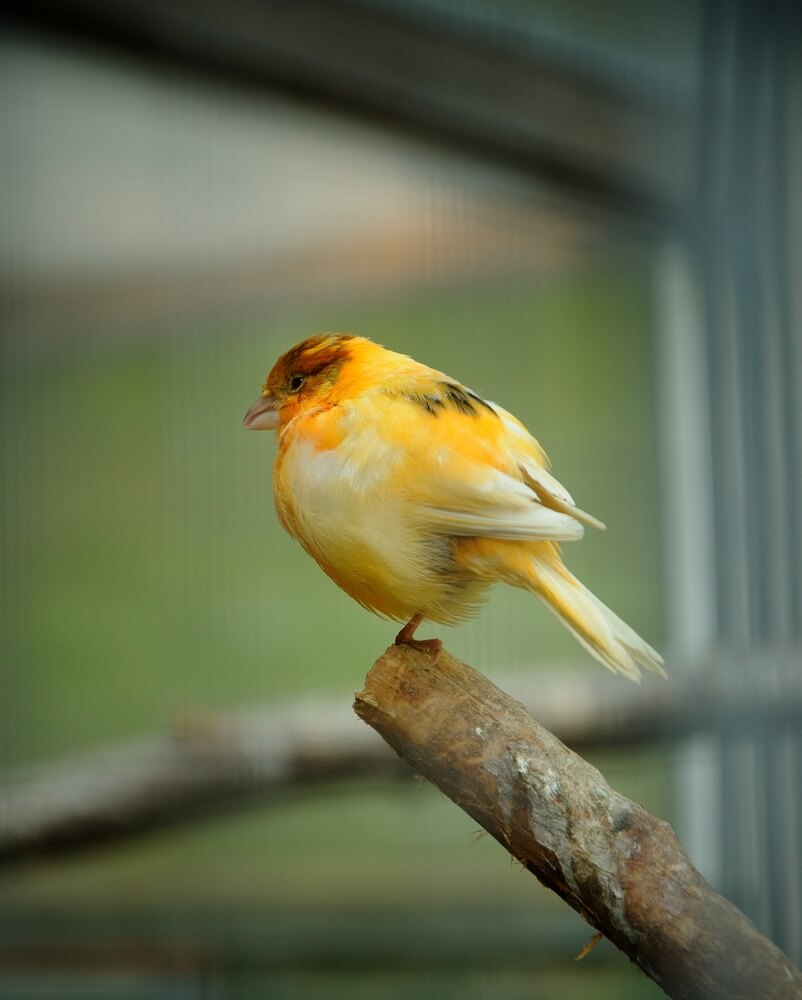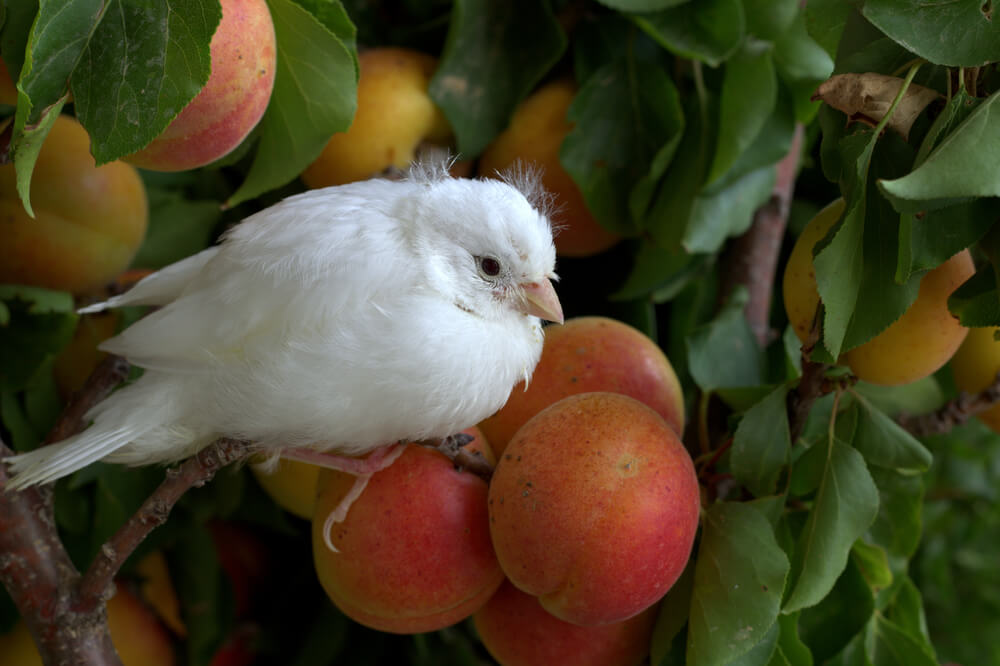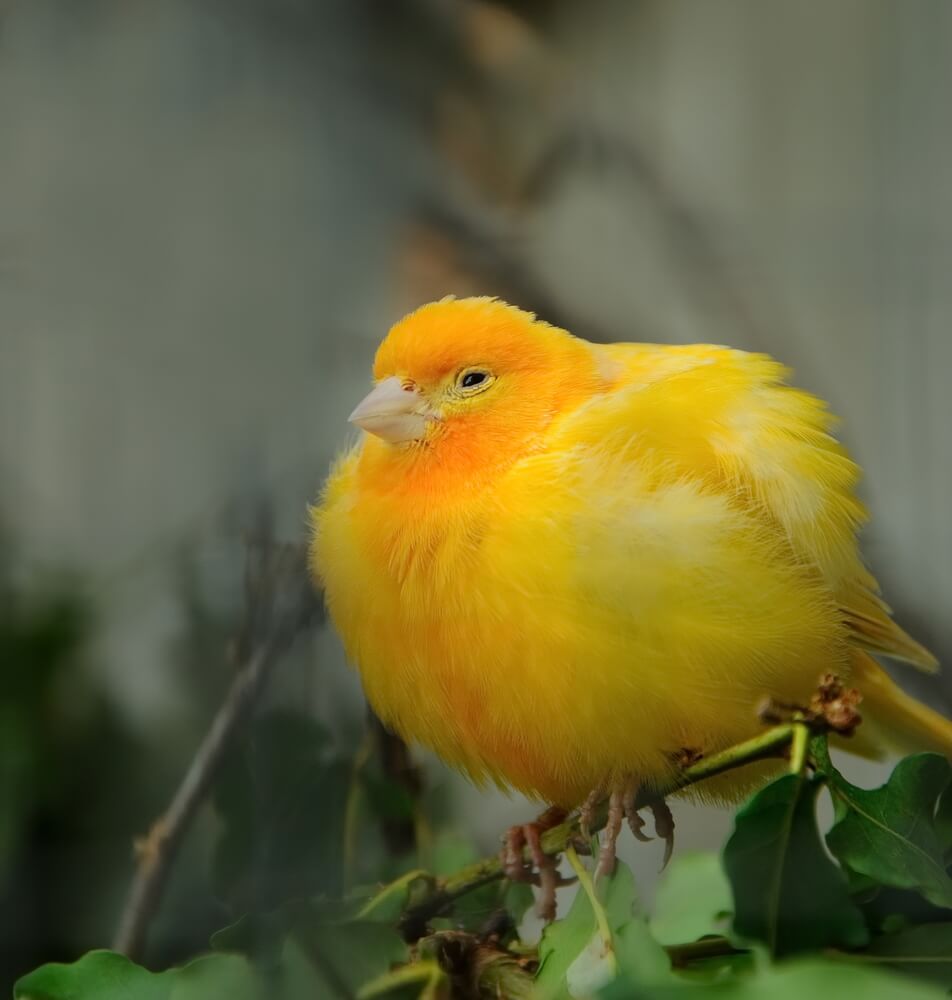Canaries are fascinating creatures with unique behaviors that can sometimes puzzle their owners and observers. One such behavior is when a canary puffs up its feathers, appearing fluffier and larger than its usual size.
To understand why do canaries puff up, it is necessary to delve into some of the reasons behind this distinctive display.
Puffed-up feathers can be a way for canaries to communicate with each other, regulate their body temperature, and respond to their environment. These delicate birds are sensitive to their surroundings, which include various factors such as temperature, humidity, and social interaction.
Observing this behavior could provide us with invaluable insights into their overall health and well-being, making it crucial for bird enthusiasts and owners to be aware of its potential underlying causes.
Key Takeaways
- Puffed-up feathers may indicate social communication, temperature regulation, and environmental responses in canaries
- Observing this behavior can provide insights into a canary’s overall health and well-being
- Understanding the possible causes of canaries puffing up assists owners and enthusiasts in providing optimal care and conditions for these fascinating birds
Why Do Canaries Puff Up

Normal and Abnormal Behavior
As a canary owner, I’m always curious about my bird’s behavior, and I spend a lot of time observing it. Canaries, like other birds, have a variety of behaviors that help them communicate their emotions and needs.
It is essential to distinguish between normal and abnormal behavior to ensure that your canary is healthy and comfortable.
Normal behavior for canaries includes singing, preening, bathing, and eating. These activities are a sign of a content and healthy bird.
On the other hand, abnormal behavior such as lethargy, loss of appetite, aggressive actions, or excessive sleep can indicate an underlying issue.
Why Birds Puff Up
Puffing up is a common behavior that can be observed not only in canaries but also in other birds. There are several reasons why birds puff up their feathers:
- Thermoregulation: I’ve noticed that my canary puffs up in cooler temperatures. Birds puff up to create an insulating layer of air between their body and their feathers, helping them stay warm.
- Preening: After a good preening session, canaries often puff up their feathers to help distribute preen oil evenly, which keeps their feathers in good condition.
- Comfort: Just like humans, birds feel the need to stretch from time to time, and puffing up can be a part of this process.
- Defensive display: When a canary senses a threat, it may puff up to appear larger and more intimidating as a way to deter potential predators.
Understanding your canary’s behavior, particularly when it comes to puffing up, is essential to ensure their well-being. Observing and getting to know your bird will help you create a nurturing environment and address any potential issues.
Canaries and Their Environment
Proper Canary Environment
As someone who owns a canary, I know how important it is to create a proper living environment for them. One essential aspect of a canary’s environment is the cage. I make sure to choose a spacious cage that allows my canary to stretch its wings and move around freely.
Additionally, I provide a variety of perches with different diameters, as canaries love to perch and exercise their feet.
Ventilation is crucial for a canary’s health. I ensure there is adequate airflow in my canary’s cage by placing it away from any draft or direct heat sources, such as radiators or vents. These drafts or extreme temperature changes can stress my bird and affect its well-being.
Another aspect of their living environment is lighting. I provide my canary with sufficient amounts of natural light, as they need the proper balance of light and darkness to maintain their health.
You should always be mindful of the following factors:
- Cage: Spacious and fitted with a variety of perches
- Ventilation: Adequate airflow, free from drafts
- Lighting: Natural light and proper balance of light and darkness for sleep
Factors Causing Stress
My canary, like any other bird, is sensitive to various factors that can lead to stress. Stress can result in my canary puffing up as a sign of discomfort.
Here are some common stressors for canaries:
- Poor environmental conditions: Inadequate cage size, lack of cleanliness, or improper temperature can cause stress in canaries.
- Sudden changes: Abrupt changes in the environment, such as rearranging the cage or introducing new items, can also be stressful.
- Noise and disturbances: Loud noises and constant disturbances (e.g., pets, overly bright lights) can make canaries feel unsafe, resulting in stress.
To mitigate these factors, I always maintain a clean living environment and provide consistent routines for my canary. By doing so, my canary stays happy and healthy, avoiding unnecessary stress that can lead to puffing up.
Physical Health Indicators

In my experience with canaries, I have observed that they often puff up their feathers when they are experiencing physical discomfort or illness. When a canary is sick, they may display a range of symptoms that could indicate distress or a decline in their overall health.
As a responsible canary owner, it is crucial to recognize these physical health indicators and take appropriate action to ensure their well-being.
One noticeable sign that a canary may not be feeling well is when they are not eating as they usually do. A change in appetite could suggest that something is wrong internally or that the bird is under stress. Along with this, breathing difficulties might also be an indication of a health issue.
You may notice increased respiratory rate, labored breathing, or even trouble breathing altogether.
Another factor to look out for is a change in body temperature. Canaries may puff up their feathers to regulate their body temperature and maintain warmth when they are unwell. Further, the presence of discharge from their eyes or nostrils, or purulent secretions, could indicate an infection or illness that needs to be addressed.
In terms of behavior, a canary in distress might spend more time preening than usual, which can result in excessive feather plucking. This could be a response to skin irritation or a sign of a more severe health problem.
Similarly, redness or swelling around the eyes or other body parts can be physical health indicators that something is amiss.
Digestive issues are another common concern in canaries. Diarrhea, for example, can be a sign of poor gut health and can quickly lead to dehydration if left untreated. On the other hand, sneezing frequently might be indicative of a respiratory infection or allergens in the environment causing irritation.
When your canary puffs up its feathers, it could be displaying one or several of these physical health indicators. Paying close attention to their body, behavior, and environment will help ensure that your canary remains healthy and happy.
Canary Care
Environmental Needs
As a canary owner, it’s important for me to provide a comfortable and safe living environment for my pet bird. Canaries need a consistent temperature, which should be kept between 65 and 75 degrees Fahrenheit during the day and between 55 and 65 at night.
This temperature range helps canaries thermoregulate, ensuring their feathers remain waterproof and well-groomed.
I make it a point to keep the cage away from drafty areas and direct sunlight in order to maintain a stable environment. Providing my canary with ample space to move around and perches to rest on supports their overall well-being.
Also, I ensure that the cage has a sleeping area where they can rest and feel secure.
Having their eyes checked on a regular basis is important, as improper care can lead to a myriad of health issues. Regular water changes should also be carried out to prevent bacterial growth.
Canary Feeding
Feeding my pet canary with a balanced diet is essential for maintaining good health.
My canary’s diet consists primarily of high-quality seed mixes, which I supplement with:
- Fruits: such as apples, oranges, and grapes
- Vegetables: like broccoli, carrot, and spinach
- Protein sources: including eggs and the occasional insect
I monitor my canary’s appetite closely, as a loss of appetite can be an indicator of potential health issues. Providing fresh water daily and ensuring my canary has access to a cuttlebone or mineral block for calcium is also essential for maintaining their well-being.
Regular Check-ups
Scheduling regular check-ups with a veterinarian who specializes in avian care is important to keep my pet canary in top condition and to catch any potential health issues early on. During these visits, the vet can examine my canary’s droppings, plumage, eyes, and overall condition.
Being proactive about my canary’s health by ensuring their environmental needs are met, feeding a healthy diet, and scheduling regular check-ups with an avian veterinarian is essential. Following these guidelines allows me to enjoy the company of my sociable and beautiful pet canary for years to come.
Communication and Social Interaction

I have observed that when canaries puff up, it can be related to their communication and social interaction. Puffing up is a natural behavior for them, and it can be a signal of their comfort or happiness, as well as an indicator of their mood.
In my experience, canaries tend to puff up and sing or chirp when they feel comfortable in their environment. This is a sign of a happy and content bird who is enjoying its surroundings.
Singing is a form of vocal communication for canaries, and they often use it to express their happiness or to attract a mate.
On the other hand, puffing up can also indicate aggression or discomfort. When a canary feels threatened or uncomfortable, it might puff up its feathers to appear larger and more intimidating to potential predators or rivals.
They may also become more vocal, producing louder, more aggressive chirps to assert dominance or express their dissatisfaction with their surroundings.
While observing canaries, it is important to pay attention to their behavior, vocal cues, and body language.
By understanding these signals, I can better assess their overall well-being and ensure that they are comfortable, happy, and thriving in their environment.
Canary Reproduction

I’ve observed that during the breeding season, canary behavior tends to change as they focus on finding a mate and reproducing. Their grooming gland, also known as the uropygial or oil gland, becomes more active, assisting in coat maintenance for a slick and healthy appearance. This is crucial in attracting a potential partner.
As the molting season approaches, canaries devote time to shedding old feathers and growing new ones. This can be a stressful period for the birds, as they may appear more inactive and might even be seen tucked up on one leg.
This habit is an adaptation that allows them to conserve energy and keep warm while their new plumage comes in.
Canaries are active animals that require mental stimulation and exercise. During reproduction, they may become more vocal and highly animated, as these traits are conducive to finding a mate. It’s crucial to provide a suitable environment for your breeding canaries to ensure their happiness and well-being.
In conclusion, canary reproduction involves not only physical changes in the birds but also adaptations in their behavior. Paying attention to these cues can help you better understand and care for your canaries during this important phase in their lives.
Frequently Asked Questions
Why does a canary sit at the bottom of the cage?
Canaries often sit at the bottom of the cage when they’re feeling unwell or stressed. This behavior might indicate your canary is experiencing pain, an illness, or a respiratory issue. Additionally, they might be seeking solace and warmth if they’re feeling cold or frightened.
Keep an eye on your canary and consult a veterinarian if the behavior continues.
How can I tell if my canary is scared?
A scared canary might show signs such as puffing up, rapid breathing, staying in one corner, or frantically trying to escape. Other signs might include a refusal to sing, reduced appetite, or sudden aggression.
Identifying and removing any potential stressors will help your canary to feel safe again.
What are common canary beak issues?
Canaries may experience a variety of beak issues like overgrowth, cracks or fractures, or infection. To keep your canary’s beak healthy, offer a cuttlebone and regularly inspect their beak for any abnormalities.
Opt for a checkup with a veterinarian if you suspect an issue.
Do canaries puff up during molting?
Yes, canaries tend to puff up and become less active during the molting process. This occurs as they shed old feathers, allowing new ones to grow in their place. Providing your canary with extra nutrition and warmth during molting periods will help ensure their comfort.
What temperatures do canaries prefer?
Canaries thrive in temperatures ranging from 65 to 72 degrees Fahrenheit (18 to 22 degrees Celsius). Be cautious not to expose them to sudden changes in temperature, as this can lead to stress.
Further, ensure their cage is draft-free and avoid placing it in direct sunlight.
How can I tell if my canary is happy?
A happy canary is active, alert, and vocal with regular singing. You may also see your canary flying, hopping, and playing within their cage. Providing an engaging environment with toys and proper nutrition contributes to their well-being.
Remember, a cheerful canary is a sign of good health and a comfortable environment.








